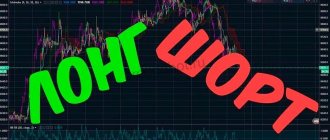Penny Stock, or junk stocks, are the cheapest securities, investments in which are associated with high risks. At the same time, they can generate significant income. The ranks of Penny Stocks can be replenished by newly issued shares of young companies, as well as shares of well-known companies that find themselves in difficult financial situations, the fate of which becomes uncertain for some time.
The acquisition of such assets is a kind of bet that either the enterprise will grow, if it is new, or the position of the corporation will improve, it will get out of the crisis in the foreseeable future.
Features of Penny Stock
Conventionally, brokers classify shares priced at less than five dollars as a Penny Stock. However, it must be understood that this amount is selected approximately. Previously, in the United States, legislation classified securities priced up to a dollar into this category, but subsequently the rates were increased.
In addition to the low price, Penny Stocks have other features.
- Such securities are most often traded only in some additional listing on the exchange or even exclusively on the over-the-counter market.
- The liquidity of junk stocks is significantly lower than that of ordinary securities and even more so compared to blue chips.
- Companies that issue junk bonds either undergo a simplified procedure for state registration of the issue, or for one reason or another are exempt from this procedure altogether.
- Information about the activities of the company issuing Penny Stocks is not as accessible as compared to participants in the main exchange listings. Sometimes it can be quite difficult to obtain reliable information about a company.
All these features provide an opportunity for unscrupulous market participants to manipulate and even outright deceive. History knows a lot of cases where scammers created companies, issued junk shares, sold them hard to investors and then either declared the business bankrupt or simply went into hiding.
One of these criminal stories is the release of a whole series of papers from 2008 to 2013 by Zeke de Mason in California, USA. As a result, the mastermind of the fraud was exposed and sentenced in federal court to a very long prison term, but who will return the money to investors?
On the other hand, many, if not most, of today's market-leading companies once began their activities by issuing junk shares, which later turned into first-class securities.
Penny Stock Price Fluctuations
Penny stocks offered in the market are often growth companies with limited cash and resources. Because they are mostly small companies, penny stocks are best for investors who have a high tolerance for risk. Generally, penny stocks have higher levels of volatility, which results in higher reward potential and therefore higher levels of inherent risk. Investors can lose their entire investment in penny stocks or more than their investment if they buy on margin. Buying on margin means that the investor borrowed funds from a bank or broker to purchase shares.
Given the increased level of risk associated with investing in penny stocks, investors should take special precautions. For example, an investor should have a pre-set stop loss before entering a trade and should know at what price level to exit if the market moves in the opposite direction. Stop-Loss orders are instructions placed by a broker that set a price limit that, when reached, triggers the automatic sale of securities.
Although penny stocks can have wild swings, it is important to have realistic expectations so that investors understand that penny stocks are a high-risk, low-volume investment.
Examples of Penny Stocks
For an example of shares in the Penny Stocks category, as of the beginning of 2021, we can cite such companies of the American over-the-counter market as Νew Gold Inc, quotes for December rose from 1.75 to 2.40 dollars per share, and still have prospects. Or Turksell Iletisim Hizmetlery AS, a Turkish paper represented on the American market by a depositary receipt, price 4.80 per share. Karora Resources Inc, a Canadian company, whose shares rose from $2.60 to $3.10 per share before the new year, and so on.
It should be taken into account that the situation on the junk stock market is changing rapidly. Therefore, forecasts can be relevant - for a very short period of time.
The good news is that finding penny stocks is very easy. It is enough to take a list of shares of a particular site, sort the table by the current price of the security, and everything that turns out to be cheaper than $5 is junk shares in the understanding of American law.
Brokerage account
Open
What are Penny Stocks and how to make money on them.
interactivetraders.pro/ What are Penny Stocks and how to make money on them. Penny Stocks are stocks that trade at a relatively low price and market capitalization (share prices are often as low as $5 - $10). Penny Stocks definition : 1. Price Share : The SEC (Securities and Exchange Commission - www.sec.gov) considers all stocks trading below $5 per share as Penny Stocks. 2. Markets in which Penny Stocks : Penny Stocks are traded on various markets, including the NYSE, NASDAQ and AMEX but the largest number of Penny Stocks are traded on the OTC markets (OTCQX, OTCQB, OTCPink and OTCGrey). 3. Market Capitalization: Market capitalization is the value of a company's shares multiplied by the total number of shares outstanding. Company capitalization assessment: Mega Cap – over $200 billion Large Cap – over $10 billion Mid Cap – from $2 to $10 billion Small Cap – from $300 million to $2 billion Micro Cap – from $50 million to $300 million Nano Cap - less than $50 million Russell 2000 Index Futures - https://finviz.com/futures_charts.ashx?t=ER2 Russell 2000 Index is a stock market index consisting of 2,000 small-cap companies - https://www.russell .com/indexes/americas/indexes/fact-sheet.page?ic=US2000 But it is worth noting the fact that not every Penny Stocks can be included in this index. We can say that the Russell 2000 index includes, so to speak, the Penny Stocks . The Russell 2000 is by far the most common benchmark for mutual funds, while the S&P 500 Index (SPY) is used primarily for larger-cap companies. One of the most common trading strategies in the Penny Stocks environment is Pump and Dump. Information can be viewed at: https://www.sec.gov/answers/pumpdump.htm https://www.investopedia.com/terms/p/pumpanddump.asp Pumping is often carried out by company insiders or a major stock player who bought well in advance before the news came out. Tools for pumping are often: - Newsletters by E-mail; — False information about the company’s financial indicators; — Mass advertising; — Production of numerous press releases; — Advertising the company on the websites of PR companies. The point is as follows: 1. If you track the company (news background), there is an opportunity to buy shares before the pumping. 2. After a big pump (often an increase of 50%, 100% and sometimes 1000% in a few days, weeks and sometimes months) it becomes obvious that this is a Pump and Dump scheme. When the growth of a company's shares is absolutely unjustified, the shares begin to return to their previous price levels, sometimes even lower. Understanding this pattern opens up a very good opportunity for Short in this company. Often such companies: - Poor fundamentals; — Poor reporting dynamics; - Large debts; — Lack of sales, etc. Because of these indicators, financial institutions with large amounts of cash do not invest in the shares of these companies. You can find such shares on the websites: www.finviz.com www.finance.yahoo.com/stock-center www.stocksinplay.ru Such parameters as: - Price: - Volume; - A country; — Exchange; — Sector, etc. can be set at your discretion. Examples of Pump and Dump Looking at the financial indicators of the companies that are below the charts, you can see that almost all companies have low Market Cap and poor fundamentals. Of course, there are a number of patterns, such as: - Levels by M/A (Moving Average); — Breaking through Low for a day/two or more; - Gap and Crap; - Morning panic; — Breaking through a figure, etc. But you need to remember that this strategy, like others, is based on “taking money” from as many traders as possible. What worked yesterday does not mean it works today and will work tomorrow. Observe, look for patterns and use them. What do you need to start trading Penny Stocks !? To start trading, you need low financial costs. Penny Stock can be traded by housewives, students, ordinary workers and just anyone with access to the Internet. You can start trading even with a deposit of $1000 dollars. Penny stocks , in most cases, live their own lives and react little to market movements as a whole. Also, Penny Stocks are often included in the Top Gainers , showing movements of tens and hundreds of% in one trading session! It is also worth noting the fact that
Penny Stocks very often provide the opportunity to trade in the medium term, taking into account the potential movement of the company and the capital you have involved. Penny Stocks - knowing the rules of the game, is considered one of the most profitable strategies, especially for beginner traders and traders with small deposits.
The advantages of this trading strategy are obvious in most cases: - Lack of high-frequency HFT trading algorithms; — Lack of major players; — Small risks in relation to potentially large profits; — In relation to small risks, you can load with a large volume; — There is much less manipulation in Level 2 than in expensive stocks; In addition to the above, there are many other advantages! Penny Stocks is a high-risk and at the same time high-profit strategy. It is quite easy to lose money when trading this strategy, however, if your stock starts to move, it can make tens or hundreds of percent profits for you in a short period of time.
interactivetraders.pro/
Trading after hours
Penny stocks can be traded after hours, and because many significant market movements can occur after stock exchanges close, penny stocks are subject to volatile after-hours fluctuations. If penny stock investors make buy or sell trades after hours, they may sell shares at very high prices or buy shares at very low prices.
However, even the most profitable penny stocks have low liquidity and poor reporting. In addition, if the price of a stock rises sharply during the off-hours, it may be difficult for an investor looking to sell the stock to find a buyer. Penny stocks trade infrequently, especially after hours, which can make it difficult to buy and sell after hours.
When is it not a penny?
Several events can cause a small stock to become a regular stock. The Company may issue new securities in an offering registered with the SEC or may register an existing class of securities with a regulator. Both types of transactions automatically require the firm to comply with periodic reporting, including disclosure to investors of its business activities, financial conditions and management of the company, unless exempt. These filings also require the preparation of quarterly 10-Q reports, annual reports on Form 10-K and periodic reports on Form 8-K that detail unexpected and significant events.
In some cases, there are additional conditions that will require the company to file reports with the SEC. Reports must be filed if a company has at least 2,000 investors or more than 500 investors who do not qualify as accredited investors and who hold more than $10 million in assets. Generally, companies with assets of $10 million or less and fewer than 2,000 shareholders of record are not required to comply with reporting rules under the SEC. Interestingly, some companies prefer transparency by filing the same types of reports as other, perhaps more reputable, firms.
If a company lists its securities on a national securities exchange such as the NYSE or Nasdaq, it must also file an application. Finally, registration with the SEC is required if a company's securities are listed on the OTCBB or the OTC Link over-the-counter trading platform.
SEC Rules for Penny Stocks
Penny stocks are considered speculative investments. To protect investors, the SEC and the Financial Industry Regulatory Authority (FINRA) have established rules governing the trading of penny stocks. All broker-dealers must comply with Section 15(h) of the Securities Exchange Act of 1934 and related regulations to have the right to conduct transactions with kopeck shares.1
- Pursuant to Exchange Act §240.15g-9, the broker-dealer must approve the investor's transaction and ensure that the investment is suitable for purchase.4
- They must provide the customer with a standardized disclosure document as specified in §240.15g-2. This document explains the risks associated with purchasing penny stocks, customer rights, and remedies in the event of fraud.5
- Rule §240.15g-3 requires broker-dealers to disclose and confirm current quoted prices prior to the completion of a penny trade.6
- Rule §240.15g-4 states that the broker must disclose to the investor the funds the broker earns by facilitating the transaction.7
- Brokers must send monthly account statements that detail the number and identification of each penny in the client's account in accordance with Rule §240.15g-6. These statements must explain that penny stocks have limited market liquidity and provide an estimate of whether how much they think about the value of shares in this limited market.8
Pink sheets are a bad sign
Of course, there are many great companies trading for literally pennies. They have proven management teams, strong financial positions, growing market share, improving financial performance and breakthrough products or services that can dominate the industry.
However, such holdings are rather an exception to the general rule. Most penny stocks belong to "low quality" companies with very poor financial conditions and large losses. They are often in the business of releasing a questionable product in a dying industry with many competitors. Most investors, unfortunately, leave such a penny exchange with less money than they initially had.
Some penny stocks are traded on the New York Stock Exchange, the American Stock Exchange and the Nasdaq. This means that all underlying companies have listing standards, reporting requirements and investor communication obligations. However, most penny stocks are listed on so-called pink sheets - OTC or OTCQX - where listing fees, requirements and reporting rules are virtually non-existent. These markets are technically not even stock exchanges, and they attract lower quality companies. But no reputable team will work with similar securities, no matter how successful the penny asset holding's past may be.
Sources: The Balance, Wiki










